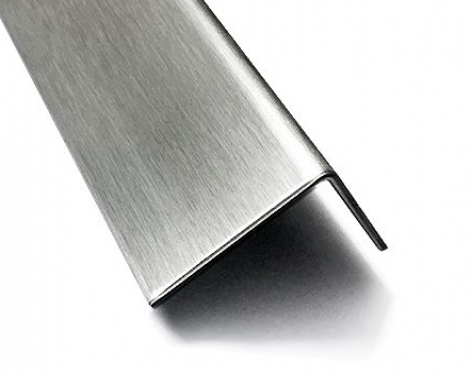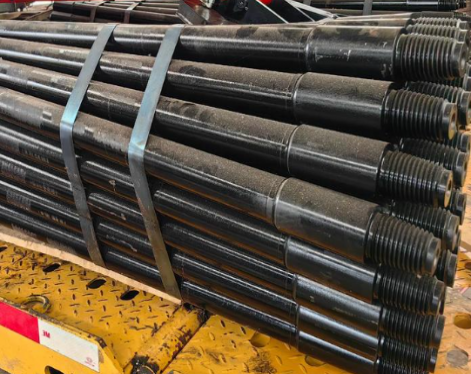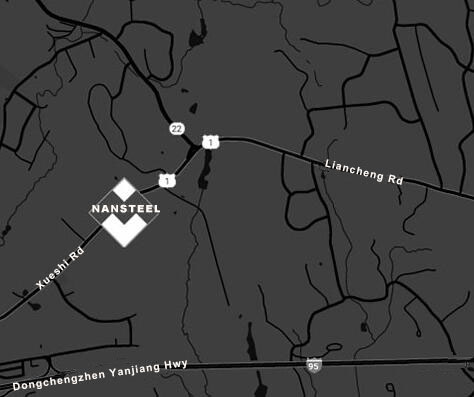There are many types of steel, angle steel and channel steel are both steel, but these two types of steel have certain differences in shape, model representation method, use, etc. Angle steel and channel steel can be used together and can generally be welded together or bolted together through connectors. Compared with angle steel and channel steel, channel steel has a better structure and a larger cross-sectional area, so it is stronger than angle steel. Let’s learn together - what is the difference between angle steel and channel steel, and which one is stronger, angle steel or channel steel.
What is angle steel?
Angle steel is a long steel bar with an "L"-shaped cross section. Its two sides are perpendicular to each other and have the characteristics of strong rigidity and good stability.
Depending on whether the widths of the two sides are equal, it can be divided into equal-leg angle steel (same width on both sides) and unequal-leg angle steel (different widths on both sides). The specifications are usually expressed as "side width × side width × side thickness" (equal-leg angle steel) or "long side width × short side width × side thickness" (unequal-leg angle steel), and the unit is mostly millimeters (mm).
Angle steel is widely used in building structures (such as frames, supports), machinery manufacturing (such as equipment bases), bridge construction and other fields. It mainly plays a role in connection, load-bearing or reinforcement. It is a commonly used basic profile in steel structures.

What is channel steel?
Channel steel is a long strip of steel with a "U"-shaped cross-section. Its two sides are perpendicular to the bottom edge and have good bending strength and load-bearing capacity.
Its specifications are usually expressed as "height × leg width × waist thickness" (unit: mm). It can be divided into ordinary channel steel and light channel steel according to the material. It is widely used in building structures (such as supports, beams), mechanical manufacturing (such as equipment frames), vehicle manufacturing and other fields. It mainly plays a load-bearing, fixing or frame supporting role. It is one of the common profiles in steel structures.
What is the difference between angle steel and channel steel?
Angle steel and channel steel are both shaped steel. There are some differences between these two types of steel. The main differences are:
1. Different shapes
Angle steel is a steel material with a right-angled cross-section, basically the same thickness and width on both sides, and an L-shaped cross-section; the upper and lower legs of channel steel are equal in width, and the cross-section is a groove.
2. Model representation methods are different
The specifications of angle steel are usually expressed in the form of side width x side thickness; the specifications of channel steel are expressed in the form of height (mm) x leg width (mm) x waist thickness (mm).
3. Different uses
Angle steel can be used to make cable brackets, and can also be used in distribution boxes, terminal boxes, fixed racks or foundations. It can also be used in roof trusses of open-air warehouse greenhouses. Channel steels are mostly used to make panel foundations and fixed brackets, such as the foundations of electrical panel foundations in power plants and substations.
Can angle steel and channel steel be welded together?
Angle steel and channel steel are both steel materials, which can generally be welded. Angle steel is often used when channel steel is fixed. Angle steel and channel steel are welded together to ensure stability. This combination can utilize the stability of angle steel and the bending resistance of channel steel to form a more complex load-bearing structure (such as frames, brackets, support systems, etc.), which is widely used in construction, machinery manufacturing and other fields.
Before welding, it is necessary to ensure that the joint design is reasonable (such as adding grooves and avoiding stress concentration), and to do preparatory work such as rust removal and preheating to ensure welding strength and structural safety.
Which is stronger, angle steel or channel steel?
The "strength" of angle steel and channel steel cannot be generalized, it depends on the cross-sectional size, force direction and scenario.
From a structural point of view, angle steel is "L" shaped, has strong torsion resistance, and is suitable for bidirectional force; channel steel is "U" shaped, has better bending resistance, and is suitable for unidirectional load-bearing. Under the same cross-sectional area, channel steel is stronger when bent horizontally. For example, the bending resistance of No. 10 channel steel is about 47% higher than that of angle steel of the same specification. Angle steel has more advantages when subjected to torsional force.
When subjected to axial force (tension/compression), the difference between the two is not big, mainly depending on the material and cross-sectional size.
In summary, channel steel is selected for unidirectional load-bearing, and angle steel is selected for bidirectional force or torsion resistance. It needs to be judged based on the specific scenario.
Read more: Galvanized Angle Steel vs.Galvanized Channel Steel
What is angle steel?
Angle steel is a long steel bar with an "L"-shaped cross section. Its two sides are perpendicular to each other and have the characteristics of strong rigidity and good stability.
Depending on whether the widths of the two sides are equal, it can be divided into equal-leg angle steel (same width on both sides) and unequal-leg angle steel (different widths on both sides). The specifications are usually expressed as "side width × side width × side thickness" (equal-leg angle steel) or "long side width × short side width × side thickness" (unequal-leg angle steel), and the unit is mostly millimeters (mm).
Angle steel is widely used in building structures (such as frames, supports), machinery manufacturing (such as equipment bases), bridge construction and other fields. It mainly plays a role in connection, load-bearing or reinforcement. It is a commonly used basic profile in steel structures.

What is channel steel?
Channel steel is a long strip of steel with a "U"-shaped cross-section. Its two sides are perpendicular to the bottom edge and have good bending strength and load-bearing capacity.
Its specifications are usually expressed as "height × leg width × waist thickness" (unit: mm). It can be divided into ordinary channel steel and light channel steel according to the material. It is widely used in building structures (such as supports, beams), mechanical manufacturing (such as equipment frames), vehicle manufacturing and other fields. It mainly plays a load-bearing, fixing or frame supporting role. It is one of the common profiles in steel structures.
What is the difference between angle steel and channel steel?
Angle steel and channel steel are both shaped steel. There are some differences between these two types of steel. The main differences are:
1. Different shapes
Angle steel is a steel material with a right-angled cross-section, basically the same thickness and width on both sides, and an L-shaped cross-section; the upper and lower legs of channel steel are equal in width, and the cross-section is a groove.
2. Model representation methods are different
The specifications of angle steel are usually expressed in the form of side width x side thickness; the specifications of channel steel are expressed in the form of height (mm) x leg width (mm) x waist thickness (mm).
3. Different uses
Angle steel can be used to make cable brackets, and can also be used in distribution boxes, terminal boxes, fixed racks or foundations. It can also be used in roof trusses of open-air warehouse greenhouses. Channel steels are mostly used to make panel foundations and fixed brackets, such as the foundations of electrical panel foundations in power plants and substations.
Can angle steel and channel steel be welded together?
Angle steel and channel steel are both steel materials, which can generally be welded. Angle steel is often used when channel steel is fixed. Angle steel and channel steel are welded together to ensure stability. This combination can utilize the stability of angle steel and the bending resistance of channel steel to form a more complex load-bearing structure (such as frames, brackets, support systems, etc.), which is widely used in construction, machinery manufacturing and other fields.
Before welding, it is necessary to ensure that the joint design is reasonable (such as adding grooves and avoiding stress concentration), and to do preparatory work such as rust removal and preheating to ensure welding strength and structural safety.
Which is stronger, angle steel or channel steel?
The "strength" of angle steel and channel steel cannot be generalized, it depends on the cross-sectional size, force direction and scenario.
From a structural point of view, angle steel is "L" shaped, has strong torsion resistance, and is suitable for bidirectional force; channel steel is "U" shaped, has better bending resistance, and is suitable for unidirectional load-bearing. Under the same cross-sectional area, channel steel is stronger when bent horizontally. For example, the bending resistance of No. 10 channel steel is about 47% higher than that of angle steel of the same specification. Angle steel has more advantages when subjected to torsional force.
When subjected to axial force (tension/compression), the difference between the two is not big, mainly depending on the material and cross-sectional size.
In summary, channel steel is selected for unidirectional load-bearing, and angle steel is selected for bidirectional force or torsion resistance. It needs to be judged based on the specific scenario.
Read more: Galvanized Angle Steel vs.Galvanized Channel Steel









